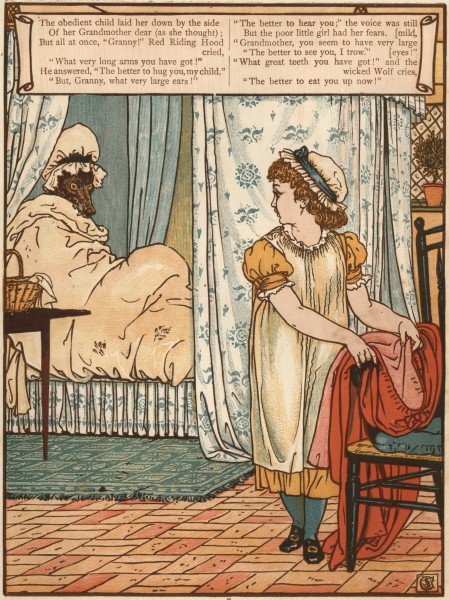
I have a long backlog of adaptations I wished to discuss, and when I was exploring them, I came across two very different Little Red Riding Hood tales, one a short film, one a webcomic. While most interpretations focus on a young and handsome stranger as the wolf, these give us a different look at the wolves in our lives.
The Red Hood first examines the wolf as "men." All men have an animal inside them waiting to strike. The enemy is not a predatory stranger, but the supposedly safe husband. And then the wolf is the girl. The wolf is not a specific gender. It is a primal and desperate urge inside all humankind.
Once Upon a Blog has a wonderful write up of it, including background and words from the director about her vision for the film. My joy at Red's killing was not as complete as Gypsy's however. When the husband stopped, and did not attack her, I saw a moment of doubt, of softness, like he might want to talk. But then her lover did not give him a chance to speak. That moment of the husband's hesitancy diminished the triumph I might have felt in her actions.

Redden by Maya Kern is a short webcomic which sends Red, a little girl, off to visit Grandmother, a terrifying monster in the woods. She is helped along the way by a wolf who gives her his pelt to "stay pure." When Grandmother see's Red, she decides to keep her as an apprentice. She forces her to set traps for the wolves of the forest, and Red tries to helps them get free. But one day Grandmother catches her, and Red must fight for her life. The end is beautiful and heart wrenching.
The literal wolf in the tale is a friend whom Red must struggle to protect against Grandmother. Grandmother is the real predator.

illustration by Walter Crane
This brings up an interpretation of the fairy tale that is seldom explored in adaptations. The motif of the replaced relative comes up often in fairy tales. A mother is killed and replaced by a stepmother who is evil. The Brothers Grimm changed a lot of mothers to stepmothers so that the mother would remain good while still exploring the idea of someone who should love you treating you horribly. While the wolf in the forest is male, he goes and usurp's grandmother's place, even going so far as to wear her clothes, get in her bed and imitate her voice. A grandmother who used to be loving and kind, but now is cruel. The wolf is actually the grandmother. A loved one who has changed. Or in fact, a loved one who should be good but is evil. It is an interesting aspect to explore.
There are many wolves in the world. I think that is why "Little Red Riding Hood" is so captivating. We have wolves in every culture, in every walk of life: the person who appears to be good, but really is not. As much as the predatory male stranger is a strong and resonant interpretation, it would be interesting to see adapters to go in other directions to confront the other wolves in our lives.
No comments:
Post a Comment